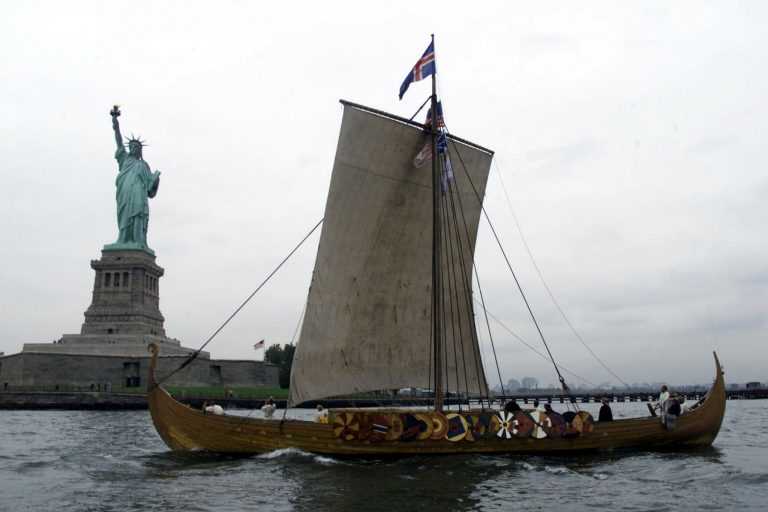Step into Iceland´s Past
Many travellers are discovering this cosy harbour town with its growing number of amenities and attractions in close proximity to the airport, as well as a convenient place to begin and/or end one´s journey to Iceland. So, if you are ready to jump into your Icelandic adventure practically from the moment you step off the plane at Keflavik International Airport, then stick with me for a look at two of the hidden gems of the Reykjanesbær municipality – the Vikingaheimar Museum and The Duushús Cultural Centre.
Sailing in the footsteps of Leifur Eriksson
This striking modern museum was designed by the award winning architect Guðmundur Jónsson and opened in 2009. The museum is home to the Íslendingar, an exact and full-size replica of the Viking ship Gokstad, which sits in all its glory behind the three storey windows of the main hall, looking out over the deep blue waters of Faxaflói Bay. The Íslendingar is elevated on a raised platform enabling visitors to get a close look at the craftsmanship of this phenomenal vessel, which was built in 1996 by the shipwright Gunnar Marel Eggertsson. In conjunction with Iceland’s millennial celebration in the year 2000, the Íslendingur made the 4,200 km journey from Reykjavik to New York, following the route Leifur Eriksson took on his epic journey to ‘Vinland’, now known as L’Anse aux Meadows, in Newfoundland. 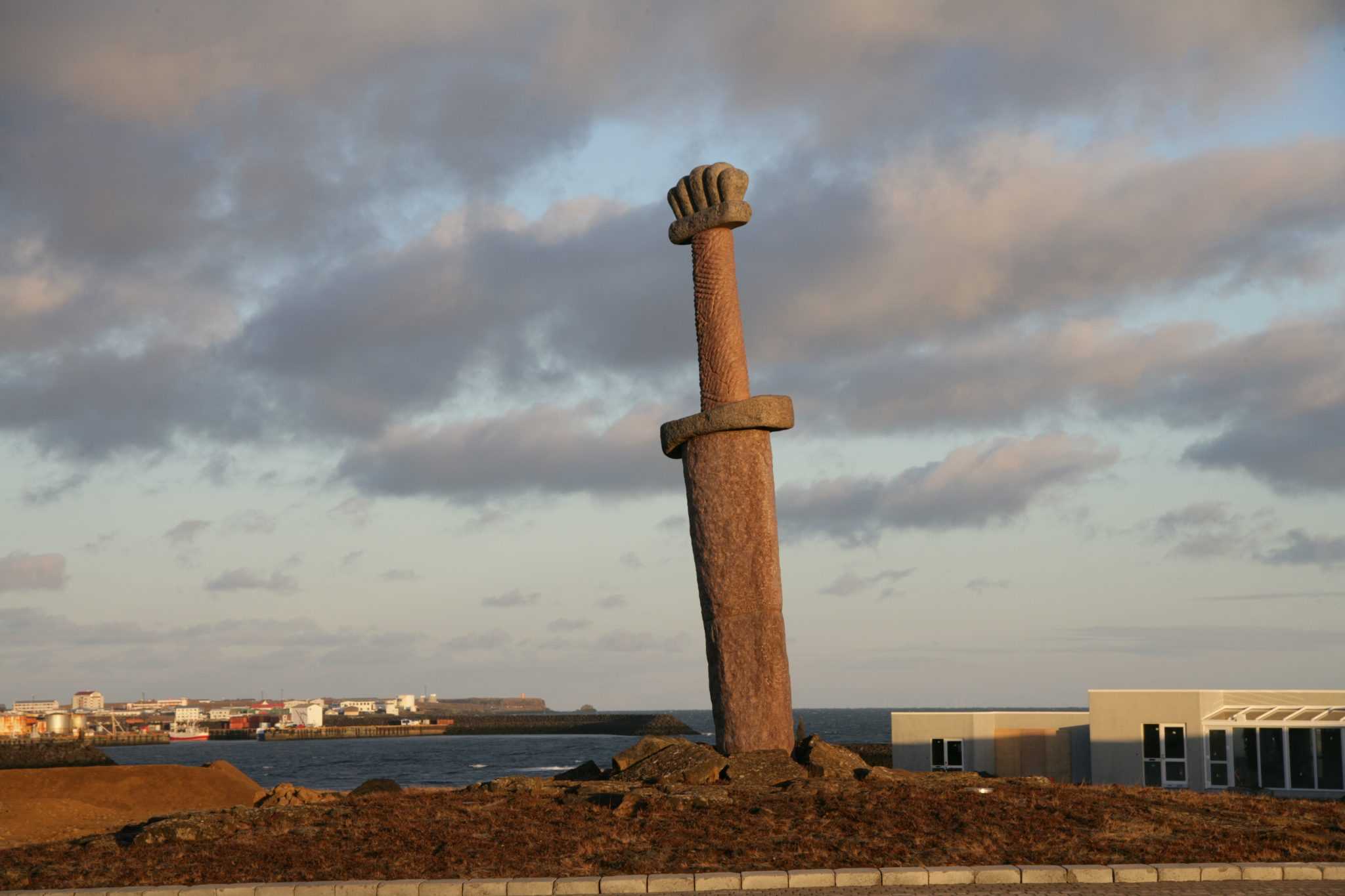
Found within the museum are interesting exhibits donated by the Smithsonian Institution in Washington DC, together with recent finds from the 2009 and 2011 archaeological excavations at Vogur, just 5 km from the museum. Carbon dating has put preliminary dates of the site between 770 and 880 AD or later, making this one of the oldest discoveries in Iceland. 
It’s easy to get lost in the moment, letting the exhibition transport you back into Viking times, imagining the good, the bad and the ugly that was life over 1,000 years ago. In one corner, a life-size sculpted figure of Leifur Eriksson, appears to be caught mid-sentence, in the narration of an exciting story, while his seated companion listens with rapt attention. Along a wall, stands a small scaled model of the settlement at Vínland, which is based upon extensive archaeological excavations that have been carried out at L’Anse aux Meadows.
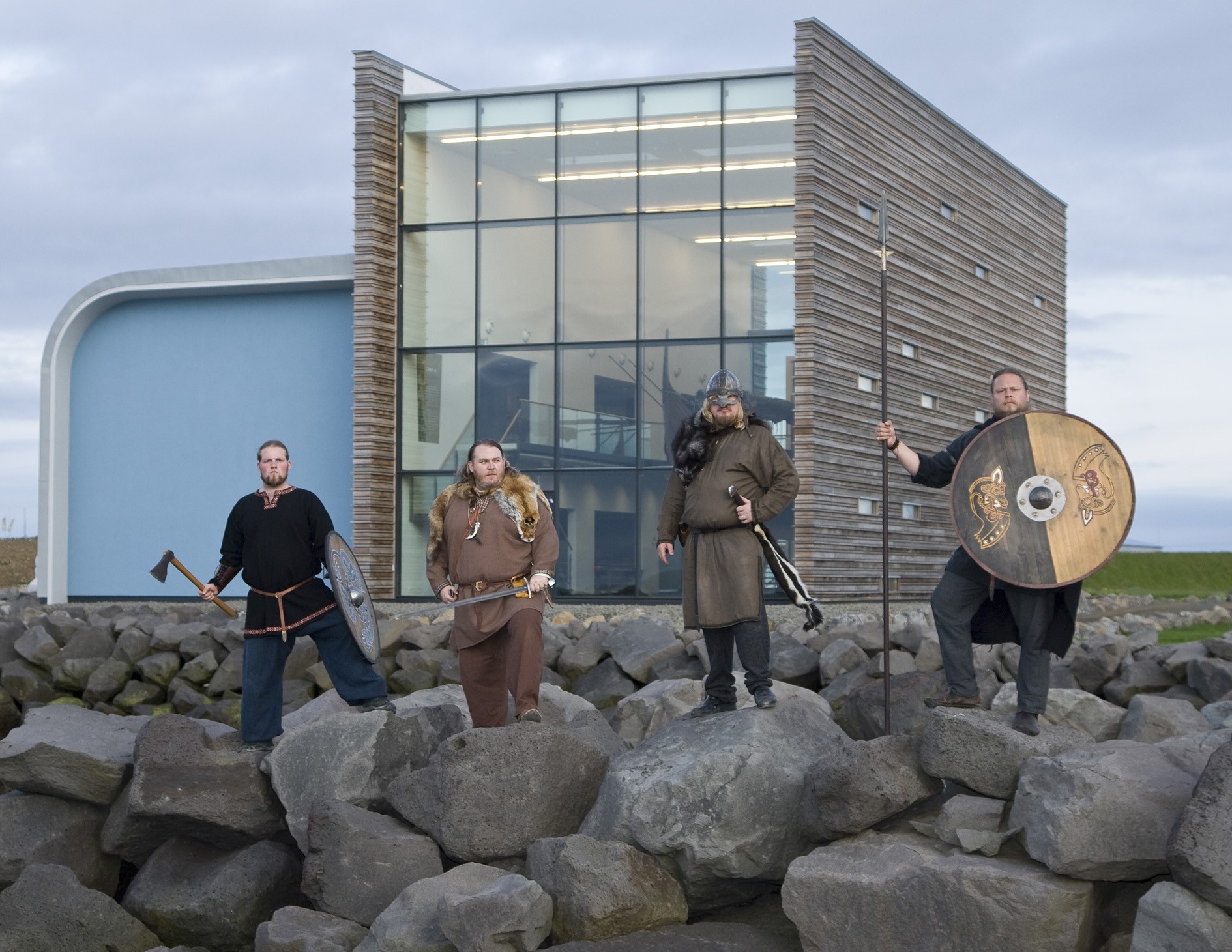
According to Wikipedia:
L’Anse aux Meadows is the only known Norse site in North America outside of Greenland and represents the farthest known extent of European exploration and settlement of the New World before the voyages of Christopher Columbus almost 500 years later. It was named a World Heritage site by UNESCO in 1978.
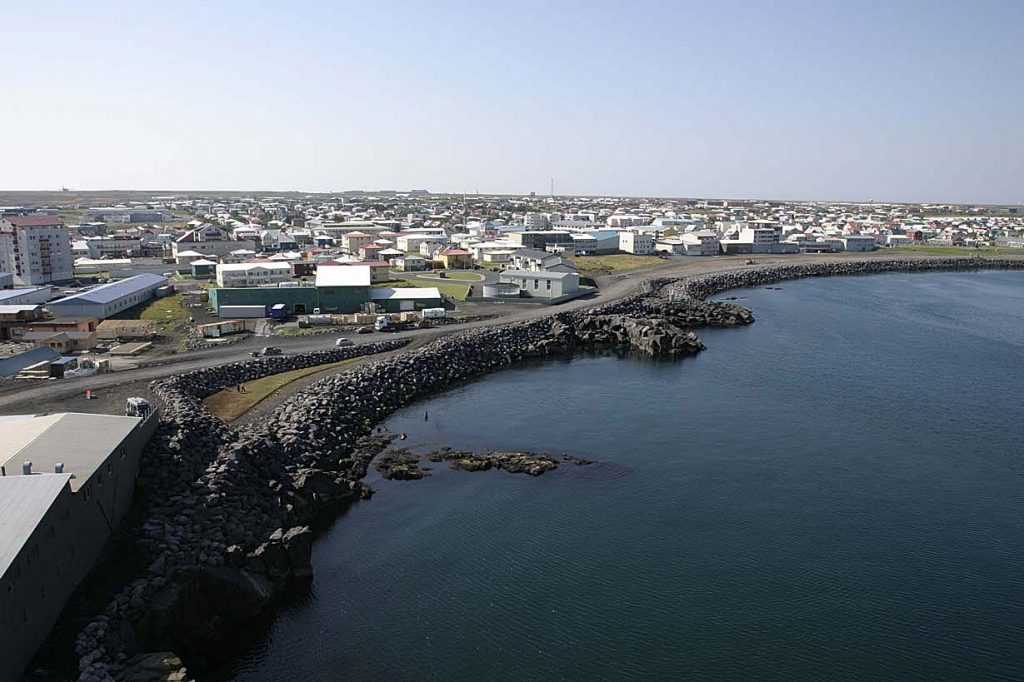
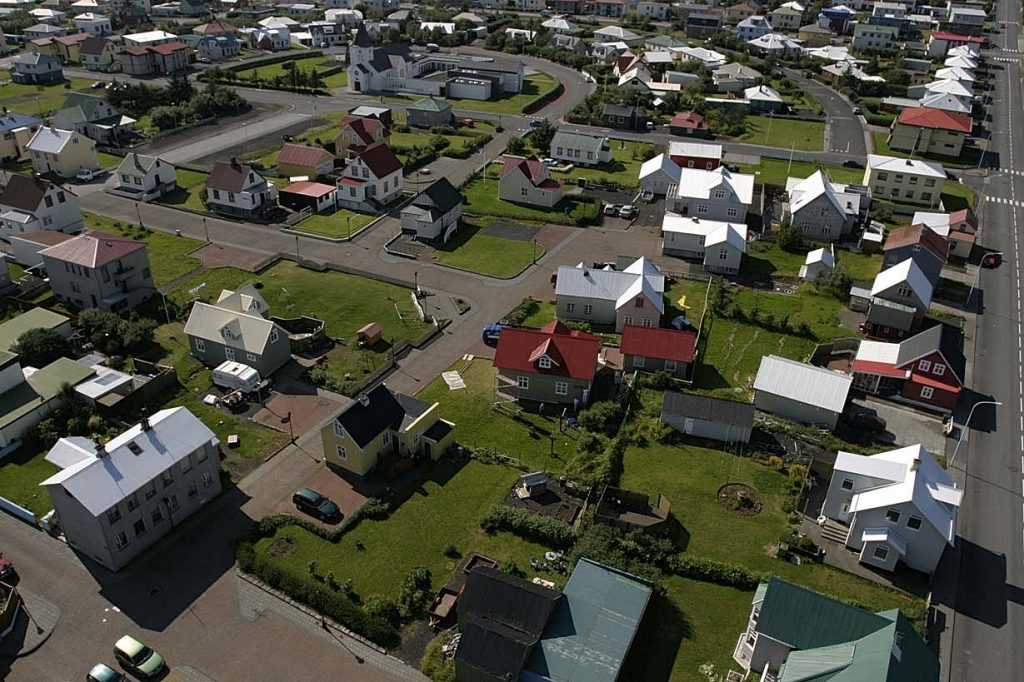
The Duúshus Cultural Center
Icelanders have been very adept over the last century in the re-purposing of buildings large and small. Almost every harbour town has its turn of the century houses which were often built by Danish or Norwegian merchants, and were used and re-used over and over in a variety of ways. 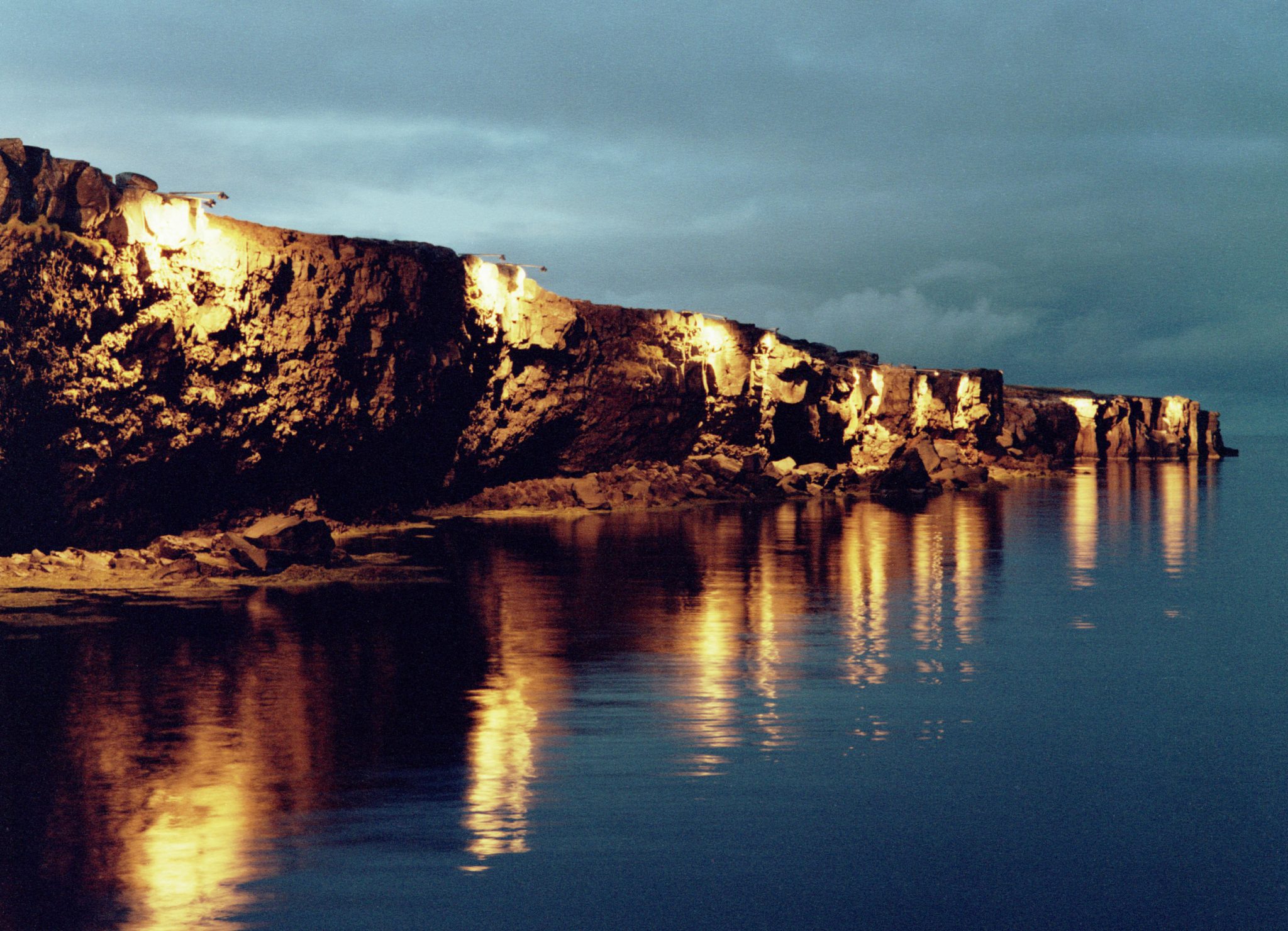
Reykjanesbær is no exception.The orginal Duúshus was built by a Danish family named Duús in 1877 and was used as a kind of general store until the 1920s. During the 70 years between the mid 1920s and the mid 1990s the house was used for the salting and packing of cod. In 2000, Duushús underwent major refurbishing and is now known as The Duushús Cultural Centre- a collection of buildings that house the Reykjanes Art Museum, The Reykjanes Heritage Museum, The Reykjanes Maritime Museum, and a music hall all under one roof.
The Reykjanes Maritime Museum houses the permanent exhibition of 110 hand-crafted model ships that span a hundred and fifty years of Icelandic maritime history. The highly detailed ships are all the creations of one man, Grímur Karlsson, a retired local skipper. 
The Reykjanes Heritage Museum houses a temporary exhibition entitled ‘Völlurinn’ which was the Icelandic name for the US Naval Air Station and NATO facility which was part of the landscape for 55 years from 1950 to 2006. Reminiscent of a still-life painting or a freeze frame from life on the base in the 1970s, the exhibition captures the era perfectly, whatever your take on the politics of this controversial slice of history might be.The exhibition closes at the end of May or early June 2012 so be sure to pop in before it is history itself.
The Reykjanes Art Museum offers a variety exhibitions from artists from all over Iceland. Exhibits are changed 6 times a year. 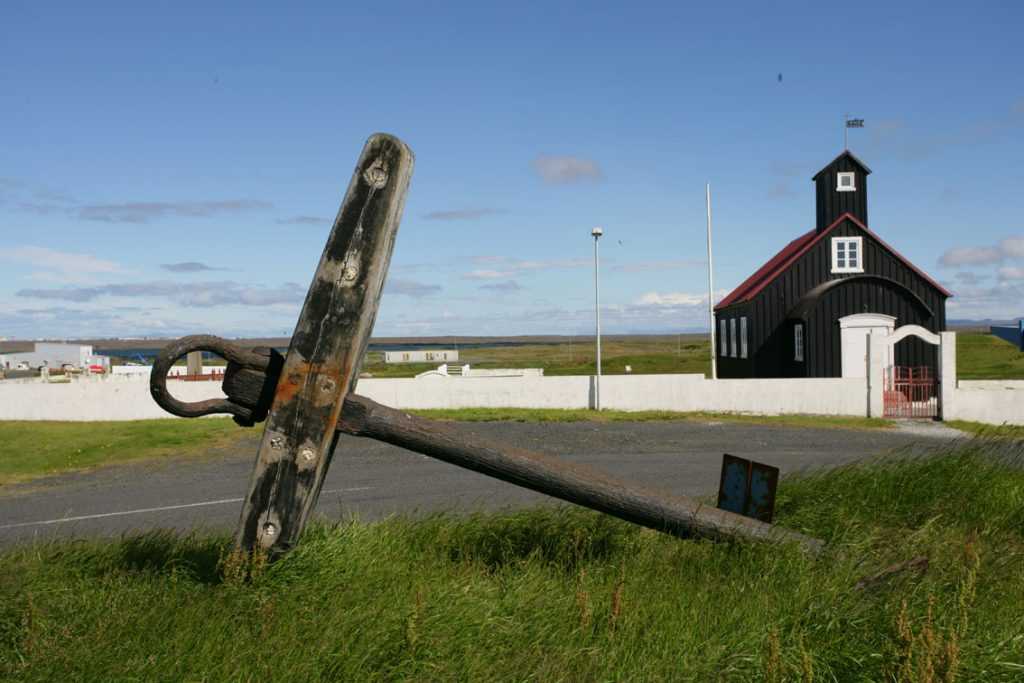
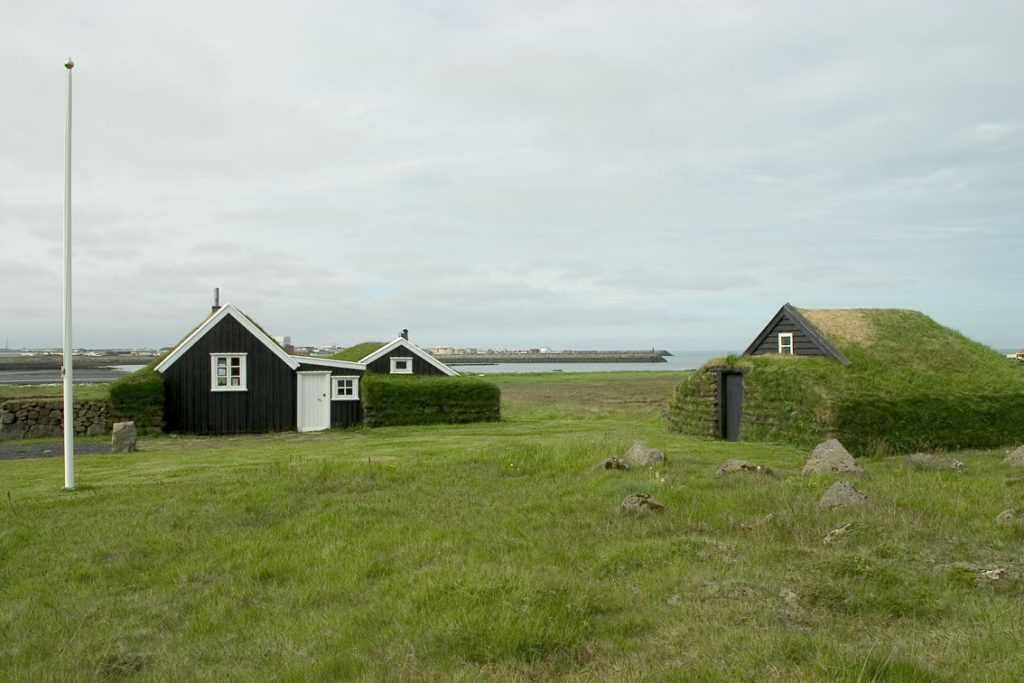
Get your bearings!
In 2004, the towns of Keflavik and its neighbours Njarðvik and Hafnir, joined forces. They are now one municipality called Reykjanesbær, with a combined population of 14,000, making this the largest population centre on the Reykjannes Penninsula.

